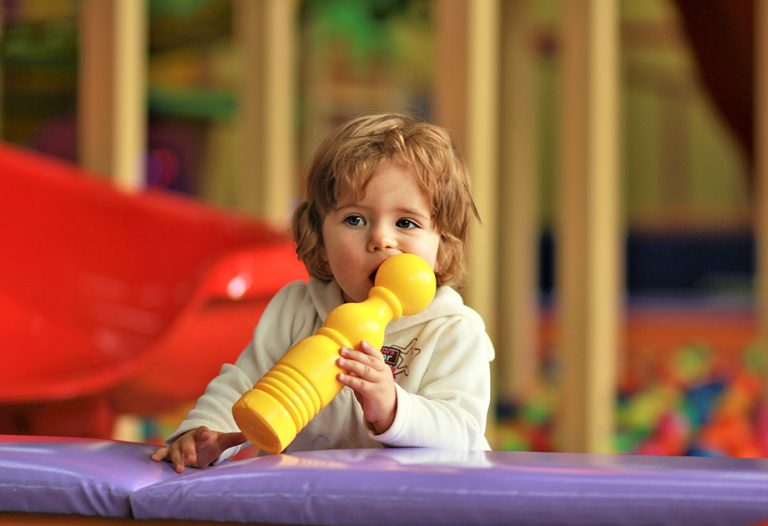What is the Ferber Method for Sleep Training Babies?
Are sleepless nights with your baby leaving you feeling exhausted and overwhelmed? The struggle to establish a consistent sleep routine can be a significant challenge for parents, affecting not only your little one’s rest but your well-being too. This is where the Ferber Method for sleep training comes into play, offering a structured approach to help your baby develop healthy sleep habits.
What exactly is the Ferber Method, and how can it transform bedtime battles into peaceful nights for both you and your child?
- Dive into the principles of the Ferber Method, pioneered by Dr. Richard Ferber.
- Explore step-by-step instructions on implementing this proven sleep training technique.
- Discover expert tips on when and how to commence the Ferber Method for optimal results.
Say goodbye to endless nights of soothing a restless baby and adopt the potential of the Ferber Method for sleep training to bring serenity back to your household. Get ready to unlock a world of better sleep for your little one and yourself through this comprehensive guide.
Introduction to the Ferber Method

The Ferber Method, developed by renowned pediatrician Dr. Richard Ferber, is a sleep training technique that aims to establish healthy sleep habits for babies and young children. This method is widely recognized and trusted by parents around the world.
The primary goal of the Ferber Method is to teach babies and young children how to fall asleep on their own and soothe themselves back to sleep when they wake up during the night. By following this approach, parents can help their little ones develop self-soothing skills and achieve a consistent sleep routine.
The Ferber Method involves a graduated extinction approach, where parents gradually increase the amount of time they wait before responding to their child’s crying. This allows the child to learn how to self-soothe and fall asleep independently.
It is important to note that the Ferber Method does not involve leaving the child to cry indefinitely but rather emphasizes intervals of comfort and reassurance.
By implementing the Ferber Method, parents can establish healthy sleep patterns for their children, promote better sleep quality, and reduce night waking. It is crucial to remember that every child is different, and it may take time and patience to see the desired results.
How the Ferber Method Works

The Ferber Method is a popular sleep training technique that aims to teach babies and young children how to self-soothe and establish healthy sleep habits. Understanding the principles of the Ferber Method can help parents effectively use this approach to improve their child’s sleep quality.
Graduated Extinction Approach
One of the key components of the Ferber Method is the graduated extinction approach. This approach involves gradually increasing the amount of time parents wait before responding to their child’s cries during sleep training. The goal is to allow the child to learn how to comfort themselves and fall asleep independently.
- During sleep training, parents start by putting their child to bed awake and saying goodnight.
- If the child begins to cry, parents wait for a predetermined period, such as 5 minutes, before going in to reassure the child briefly.
- The period of waiting is gradually increased, enabling the child to learn self-soothing techniques and fall back asleep without parental intervention.
Importance of Self-Soothing
Self-soothing is a fundamental skill that the Ferber Method emphasizes. By allowing babies to experience some level of discomfort during sleep training, they are given the opportunity to learn how to calm themselves down and fall asleep on their own.
- While it can be challenging for parents to hear their child cry, it is essential to remember that the Ferber Method prioritizes the cultivation of self-soothing abilities.
- This approach helps babies develop the skills necessary to fall asleep without relying on external stimuli, such as being rocked or fed to sleep.
- The Ferber Method recognizes that babies naturally wake up during the night, and teaching them to self-soothe allows them to navigate these waking periods and return to sleep without external assistance.
In conclusion, the Ferber Method utilizes the graduated extinction approach and the promotion of self-soothing to help babies and young children develop healthy sleep habits. By gradually increasing the time parents wait before responding to their child’s cries and encouraging self-soothing, this method can lead to improved sleep quality for both children and parents.
Remember, patience and consistency are crucial when implementing the Ferber Method.
When to Start the Ferber Method for Sleep Training

The Ferber Method for sleep training can be used when your baby is around 4 to 6 months old. At this age, most babies have developed the ability to self-soothe to some extent. It’s important to note that every child is different, so there is no one-size-fits-all answer.
However, waiting until your baby is at least 4 months old ensures that they have reached a developmental stage where they are more likely to respond positively to the method.
Before starting the Ferber Method, it’s crucial to consult with your pediatrician to ensure that your baby is ready for sleep training. Your pediatrician can provide guidance based on their individual needs and developmental milestones.
Remember, the Ferber Method should only be applied when you feel confident and ready to commit to the process. It requires consistency, patience, and a supportive environment to be successful. So, trust your instincts and choose the right time for both you and your baby to begin the sleep training journey with the Ferber Method.
Step-by-Step Guide to the Ferber Method

The Ferber Method, developed by pediatric sleep expert Dr. Richard Ferber, is a widely recognized sleep training technique that helps babies and young children establish healthy sleep habits. By gradually teaching infants to self-soothe and fall asleep independently, parents can promote better sleep quality for both their little ones and themselves.
Step 1: Preparation
- Before starting the Ferber Method, it’s essential to create a consistent bedtime routine and ensure that your baby’s sleep environment is comfortable and conducive to sleep.
- Make sure to stick to a regular schedule, keep the room dimly lit, and use soothing cues such as gentle lullabies or white noise.
Step 2: Implementation
- The Ferber Method involves a graduated extinction approach, which means gradually increasing the intervals of time before comforting your baby during sleep training.
- Begin by putting your baby down drowsy but awake, and if they start crying, wait for a predetermined period of time (e.g., 3 minutes) before offering reassurance.
- Extend the waiting intervals over consecutive nights, giving your little one the opportunity to learn how to self-soothe.
Step 3: Adjustment
- As you progress with the Ferber Method, pay close attention to your baby’s response and adjust the waiting intervals accordingly.
- Every child is different, so it’s essential to tailor the method to your baby’s needs and temperament.
- Remember to be consistent, patient, and supportive throughout the process.
By following these steps, parents can empower their babies to develop self-soothing skills and establish healthy sleep patterns. However, it’s important to consult with a pediatrician or sleep consultant if you have concerns or questions regarding the Ferber Method or any other sleep training technique.
6 Tips for Successful Ferber Method Implementation

Implementing the Ferber Method for sleep training can be a challenging process, but with the right strategies and support, you can increase your chances of success.
Here are some practical tips and advice to help you navigate the journey:
1. Establish a Consistent Bedtime Routine
- Create a soothing routine that signals to your baby that it’s time to sleep.
- This can include activities like a warm bath, gentle massage, and reading a bedtime story.
2. Gradually Introduce the Method
- Start by implementing the Ferber Method gradually.
- Begin with short intervals of comforting your baby and gradually increase the time between check-ins.
- This gradual approach helps babies learn to self-soothe.
3. Be Consistent
- Consistency is key when using the Ferber Method.
- Stick to the established routine and follow the designated intervals for check-ins.
- Consistency helps your baby understand the expectations and promotes the development of healthy sleep habits.
4. Offer Comfort from a Distance
- When checking in on your baby during the designated intervals, provide comfort from a distance.
- Avoid picking up or engaging in prolonged interactions, as this may disrupt the self-soothing process.
5. Stay Calm and Patient
- It’s normal for babies to cry during the initial stages of sleep training.
- Stay calm and patient, knowing that you are teaching your baby an important skill.
- Remember, this method is designed to promote healthy sleep habits and improve overall sleep quality.
6. Seek Support
- Enlist the support of your partner or a trusted family member during the sleep training process.
- Having someone to share the responsibilities and offer emotional support can make the journey more manageable.
Remember, every baby is unique, and it may take time for the Ferber Method to show its full effectiveness. Stay committed, be patient, and consult with a pediatrician or sleep consultant if you have any concerns or questions along the way.
With these tips, you can increase the chances of successful sleep training using the Ferber Method and help your baby establish healthy sleep patterns.
The Final Note: Ferber Method for Sleep Training
To summarize, the Ferber Method is a proven and effective approach to sleep training for babies and young children. By following the principles of the Ferber Method and implementing the recommended steps, parents can help their little ones establish healthy sleep habits and improve overall sleep quality.
One of the key takeaways from this article is understanding the importance of self-soothing in promoting better sleep. The graduated extinction approach of the Ferber Method gradually teaches babies to self-soothe and fall asleep independently, reducing their reliance on external sleep aids or parental interventions.
Using the Ferber Method at an appropriate age, which is typically around 4 to 6 months, can help babies develop a regular sleep-wake cycle and establish a consistent bedtime routine. The method empowers parents to respond to their baby’s needs while also encouraging self-soothing skills, leading to more restful nights for the entire family.
It’s important to note that the Ferber Method for sleep training is just one of many sleep training techniques available, and parents should choose the method that aligns with their parenting style and their child’s needs. Consulting with a pediatrician or sleep consultant can provide personalized guidance and support throughout the sleep training journey.
Incorporating the Ferber Method into your baby’s sleep routine can lead to long-term benefits, such as improved sleep patterns and better overall mental health for both the child and the parents.
Remember, establishing healthy sleep habits takes time and consistency, but with patience and dedication, you can help your little one enjoy a peaceful and restful sleep.
Common Concerns and FAQs about the Ferber Method
When considering any sleep training method for your baby, it’s normal to have concerns and questions about its effectiveness and potential impact. The Ferber Method is no exception. Here are some common concerns and frequently asked questions about the Ferber Method for sleep training, along with expert insights and answers to help you make an informed decision for your child’s sleep training journey.







